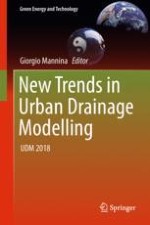2019 | OriginalPaper | Chapter
Developing a Stochastic Sewer Input Model to Support Sewer Design Under Water Conservation Measures
Authors : O. Bailey, J. A. M. H. Hofman, T. C. Arnot, Z. Kapelan, M. Blokker, J. Vreeburg
Published in: New Trends in Urban Drainage Modelling
Publisher: Springer International Publishing
Activate our intelligent search to find suitable subject content or patents.
Select sections of text to find matching patents with Artificial Intelligence. powered by
Select sections of text to find additional relevant content using AI-assisted search. powered by
